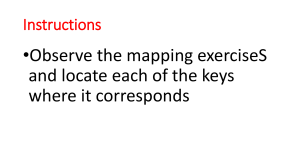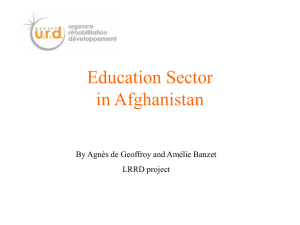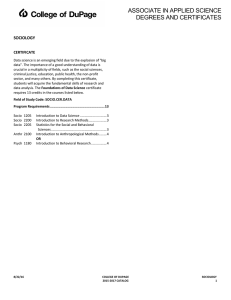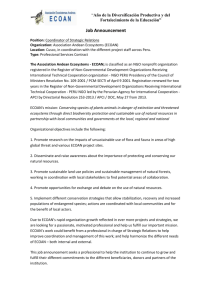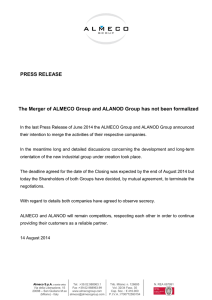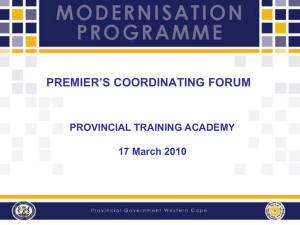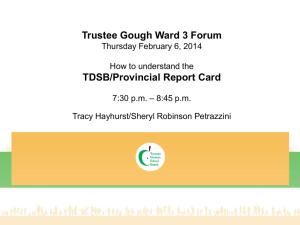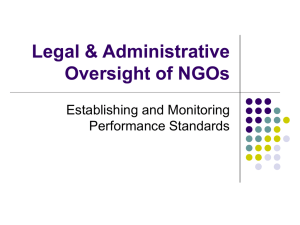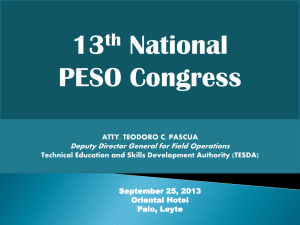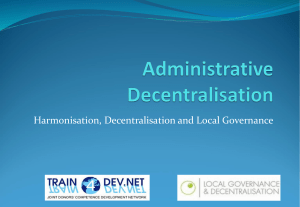local economic development : a review of the
advertisement
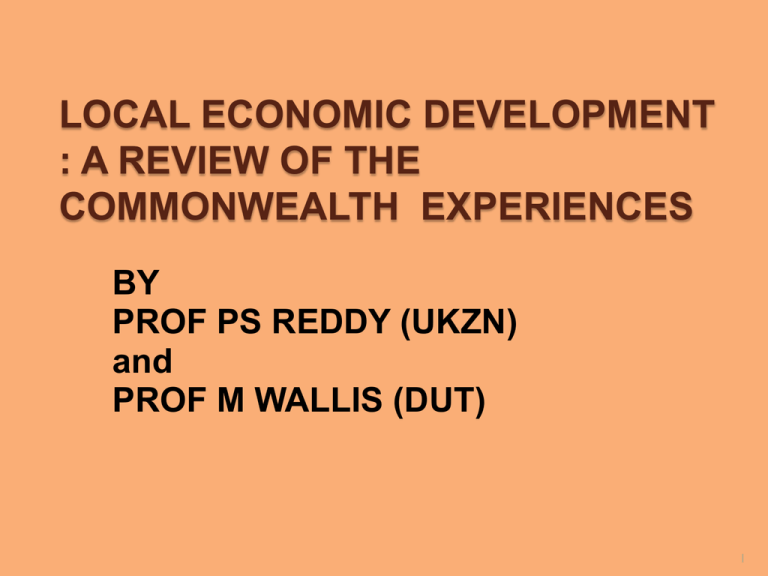
LOCAL ECONOMIC DEVELOPMENT : A REVIEW OF THE COMMONWEALTH EXPERIENCES BY PROF PS REDDY (UKZN) and PROF M WALLIS (DUT) 1 1. INTRODUCTION - Not a new concept : originated 30 40 years ago in response to socio – economic challenges of localities. Several disciplines contributed : 1970s : interest and ideas kept it alive : implementation a challenge : varying levels of success 2 2. TOWARDS AN UNDERSTANDING OF LED - World Bank : “Build up the economic capacity of a local area to improve its economic future and the quality of life for all. It is a process by which the public, business and ngo sector partners work collectively to create better conditions for employment generation”. - No blueprint for LED : complementary to provincial/national driven programmes : decentralisation strategy 3 3.KEY STAKEHOLDERS 3.1.LOCAL AUTHORITIES - Key actors : facilitate business development : retention, marketing, incentives, education and training, small business development , infrastructure, reviewing regulatory procedures. Local governance : creative and adopt collective approach 4 3.2. CIVIL SOCIETY - Residents fully involved for successful LED : legitimise process/depoliticise projects; increase effectiveness/ efficiency; widen consensus/support; foresee problems by engaging key partners/ stakeholders; secure volunteer efforts and incorporate low income/informal economy groups 5 3.3.PRIVATE SECTOR - Good understanding of local economy; importance of co – operating with government; support small business development and feasible expansion strategies 6 4. ROLE OF NATIONAL, PROVINCIAL /STATE AND LOCAL GOVERNMENT - Leadership in LED is not confined to single sector 4.1. NATIONAL GOVERNMENT - Robust inclusive local economies : high level of IGR : micro/macroeconomic policies : diffuse thinking. 7 - - Single vision for LED : access to finance/ national tools/instruments : facilitate growth. Universities important. Key to unlocking potential of locality. UNCDF : develop capacity of local governments to manage development. /support of private sector. 8 4.2.PROVINCIAL/STATE GOVERNMENT - Co – ordinate resources transferred to departments : priorities/initiatives at local level. LED : major delivery area. Departments dealing with LED/local government adequately capacitated/ empowered : develop capacity of municipalities 9 4.3. LOCAL GOVERNMENT - Dynamic implementation of national, provincial/state policies/instruments : key to promoting LED : develop capacity/skills base. Not sole perogative to promote LED, but leadership important : direct/indirect/critical roles. 10 5. COMMONWEALTH EXPERIENCES - Caribbean : Economic liberalism and globalisation : socio – economic challenges. “Third Economic Way” : transformed local government. New concept : challenges 11 - Africa : LED assimilated with community/ local development to achieve socio - economic goals : short term survival as opposed to sustainability/economic growth. Africa Report : private/ngo sector growing. Challenges : lack of capacity, transparency/accountability/difficult development environment. 12 - Asia : Financial crisis : decentralised governance : promote LED.: economic growth with private sector/civil society. Asian Development Bank : six strategic principles : partnership, decentralisation, participation, capacity building, networks and communication technology 13 6. LED PROSPECTS& CHALLENGES Differences : developed/developing states : general situation of local government rather than problems specific to LED 6.1.Unfunded Mandate : gap : what national government/society expects and resources allocated 14 6.2.Uneven Development& Consequences: Impact of colonial rule/economic history/.environmental considerations/ locational features 6.3.LED Policy Transfer : inappropriate transfer : policy failure. Economic/ social/ political and ideological contexts important. Local realities : skills/investment climate/ limited funding : conditions 15 6.4.Rural Local Government Challenges : Traditional leadership : integral part of local governance : key participants : land tenure : politically fuelled tensions. Deconcentration rather than devolution model more suitable for rural areas 16 6.5.Integration and Difficulties: integrated action/planning and working interepartmentally : appropriate structural arrangements/model for business development 6.6.Competing Priorities : Various functions : competiting priorities : demands on budget : challenges. Energising LED : prejudiced by other forms of LED. 17 6.7.Need for Business Skills, Capacity &Attitudes : capacity/ entrepreneural leadership /business skills. Links with educational/training institutions. 18 6.8.IGR : Role of National/ Intermediate Governments and Constitutions : Centralised approach critiqued. Constitutions : powers and functions to local government : stronger role in implementing socio – economic policies : need support for LED 19 6.9. Planning &Related Obstacles: Difficult local/regional development environment : limited capacity/ resources/ poor accessibility and weak civil society : viability of LED 20 6.10.Global Financial Crisis 2007 Crisis : challenges : Less dramatic than Europe and Asia. Crisis for LED : Greater scarcity of revenue for public sector spending/. private sector funding difficult to obtain; donors cautious; debts relief/cancellations more difficult. Crisis : local action : LED 21 7. INTERNATIONAL/NATIONAL/LOCAL NETWORKS AND DONOR SUPPORT - Networks/donors involved in LED : share experiences. Strengthen business communities through public private partnerships, decentralisation and LED. 22 – Moyo :aid dependancy. Many localities : basic conditions in place for LED : some external top down support : main supporters are GTZ; UN &World Bank. UNCDF three objectives : subnational focus; local level institutional development; performance linked and national policy relevance. 23 - Donors : supporters of LED : over a decade : from structural adjustment of 1990s : strenghten business communities/national policy relevance. - CLGF and other international ngos/ donor agencies : support LED by sharing knowledge, insights and best practices. Dangers of policy transfer : inadequate grounding in local realities 24 8.CONCLUSION - Practised internationally for three decades : not sole perogative of local authority but collaborative partnership. Several roleplayers : firm commitment, supporting and enabling political environment. Local partnerships/ linkages/networks can facilitate the process. 25 Way forward &Recommendations : - The legislative framework including national constitution reviewed to ensure that LED is local government function; - LED must not be allowed to fall foul of the unfunded mandate syndrome; - National government : determine what role it can play/action taken to support LED; 26 - Need for entrepreneural style of leadership; - Multiplicity of actors : networking/coordination - Most countries are trying to cope with the long term effects of the global crisis : LED : part of way forward and not casualty; 27 - Enabling environment at local level for companies to succeed and business to flourish; - Active and consistent participation of private/ngo sector for recognition and exploitation of local development opportunities 28
